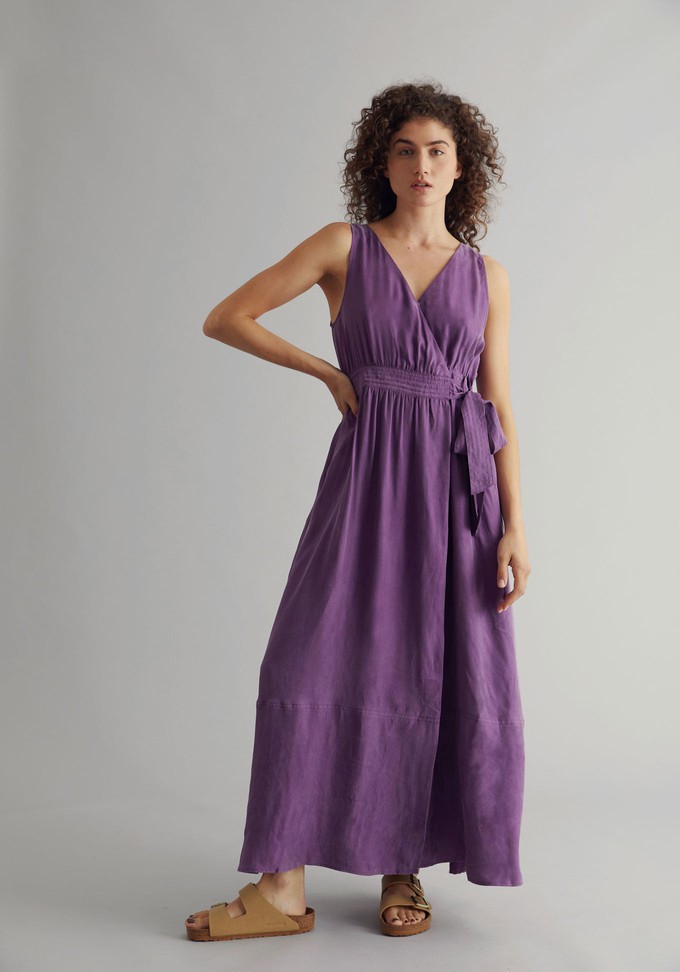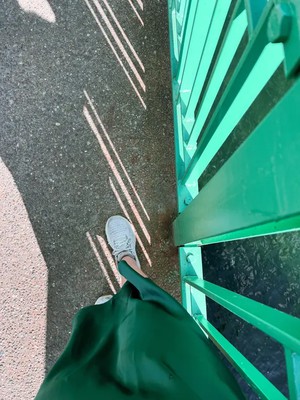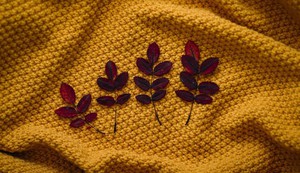- Clothes
- Bags
- Accessories
-
Inspiration
- Shoes
What Is Cupro Fabric? Is This Vegan Silk Really Sustainable?

Cupro fabric was actually invented aaaall the way back in 1890. We feel like it’s been talked about more over the past couple of decades than the previous 100 years, though!
And that makes sense since cupro has become a popular alternative to silk or even synthetic options.
But what is cupro fabric made from? What type of material is cupro? And most importantly: is this vegan silk as sustainable and ethical as it sounds?
Let’s find out!
What is cupro fabric exactly?
Cupro (also known as cuprammonium rayon, ammonia silk, cupra, or Bemberg) is a regenerated cellulose fabric made from linter, which is cotton waste.
Basically, it involves the tiniest fibres of cotton seeds, which are too small to be spun into cotton yarn.
Much like viscose and other modal options, cupro fabric is soft, smooth, and drapey. That’s why it’s also known as vegan silk!

So, is cupro fabric natural or synthetic?
Neither… and both!
Cupro relies on a natural material (cotton linter) but a synthetic production process: it needs to be treated with chemicals that break it down and rebuild it.
So, cupro fabric is considered “semi-synthetic”.
Is Tencel the same as cupro?
No. Tencel and cupro are both regenerated cellulose fabrics, but the former is made with wood pulp.
Is cupro the same as polyester?
Absolutely not! In fact, cupro and polyester couldn’t be more different, both to the touch and when it comes to their production.
Even though it does involve some chemicals, cupro is made using a natural material. Polyester, on the other hand, is derived from fossil fuels and is basically plastic. It’s also one of the worst fabrics for the environment.
Cupro and sustainability: the impact of vegan silk on the environment
Now that you’re clear on what cupro fabric is, let’s answer your other question: is this vegan silk good for the environment?
Unfortunately, we can't give you a simple yes-or-no answer. So, let's start with the sustainability pros and cons of cupro.
The eco-friendly and ethical pros of cupro fabric
- Vegan – No silkworms are frozen to death or boiled alive to make cupro fabric (yes, that really happens with traditional silk!)
- Biodegradable – Unlike polyester and most synthetic fabrics, cupro clothes won’t stick around in landfills for centuries
- It’s a byproduct of the cotton industry – From pesticides to high quantities of water, cotton production is actually really bad for the environment. However, no additional resources and energy are needed to grow its linter
- It reduces waste – All that linter would otherwise be discarded
- Machine-washable – Dry-cleaning is usually recommended for delicate silk garments, but that involves toxic chemicals that are harmful to both humans and the environment. Luckily, you can chuck your cupro clothes in the wash (as long as you use cold water)
The cons of cupro fabric from an eco-friendly and ethical standpoint
The main problems with cupro concern its chemical-heavy production process, which involves copper, ammonia, and caustic soda.
- Polluting chemicals and toxic substances – When cupro fabric is NOT manufactured in a closed-loop (= reusing most of that water and disposing of the rest safely), these chemicals will pollute local water sources and even groundwater. That’s dangerous for both local fauna and communities!
- Harmful for workers – These chemicals can be unsafe for the workers who are constantly exposed to them, too
Luckily, though, most cupro fabric is now Bemberg™ Cupro, trademarked and produced by Asahi Kasei using a closed-loop system and with circularity in mind.
So, is cupro fabric sustainable?
It’s not perfect, but overall, we believe that cupro is a fairly sustainable fabric as long as it’s produced with a closed-loop system and while keeping workers safe.
That’s why fashion brands using cupro should be transparent and have a traceable supply chain (but let's face it: that should be the case for any company that claims to be sustainable). If they rely on official Bemberg™ Cupro, though, that’s always guaranteed.
Because it’s cruelty-free and vegan, cupro is also particularly ethical when compared to traditional silk. Plus, it’s more eco-friendly than most vegan alternatives that involve plastic-derived synthetic materials.
Sustainable fashion brands using cupro fabric
Now that you know what cupro fabric is and why it’s considered ethical, would you like to give this smooth vegan silk a go?
Excellent! Some of our current favourites are:
- Komodo – This sustainable fashion pioneer relies on several eco-friendly fabrics (like organic cotton, hemp, and linen) and that includes quite a few cupro items
- Blondegonerogue – This Bulgarian brand keeps its production local and chooses different sustainable materials, including cupro fabric
- Yahmo – This brand creates modern clothes inspired by vintage designs, using eco-friendly materials like cupro fabric, too
But there’s more!
On Project Cece, we’ve brought hundreds of fairtrade fashion brands in one place, and that includes some cupro clothes, too. You can find them through the “vegan silk” filter as well (just make sure you check the product description because there are different types of silk alternatives).
In a nutshell: if you were looking for a cruelty-free alternative to silk, cupro fabric is one of the very best options—and just as smooth!
Share our story
Related articles
Is Silk Sustainable & Ethical? The Not-So-Smooth Reality
Unfortunately, this soft fabric hides a dark production process. Here’s why, together with tips on how to buy and wear silk more sustainably.
Are Rayon Fabrics Sustainable? Viscose, Tencel & More
You keep reading all kinds of names for it. So, what are the differences between these rayon fabrics? And are they as eco-friendly as they’re marketed?
What Are the Most Sustainable Fabrics? Oh, Sew Eco-Friendly!
‘Natural’ doesn’t always = ‘eco-friendly’! So, here’s a simple list of the most sustainable fabrics, why they’re good for the planet, and how to find them.
Project Cece is a platform that collects ethical fashion from vetted brands and shops in one place. Browse ethical fashion for women and men and find items that fit your style, budget and values!


_large.png)


